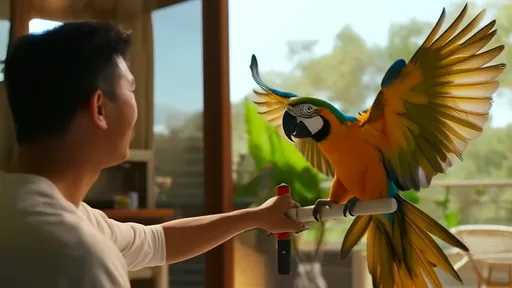Dogs have long been considered man’s best friend, and their ability to communicate with humans—and other dogs—through body language is nothing short of fascinating. Among their many expressive gestures, tail wagging is one of the most noticeable. But not all wags are created equal. Recent studies have delved into the nuances of canine tail movements, particularly the direction of the wag, and how it correlates with their emotional state. Specifically, a tail that leans or wags more to the left may reveal deeper insights into a dog’s feelings than previously understood.
For decades, researchers have observed that dogs use their tails to convey a wide range of emotions, from excitement to fear. However, the discovery that the direction of the wag holds significance was a breakthrough. It turns out that the bias in tail movement—whether it favors the left or right side—can indicate different emotional responses. A tail wagging more to the left, for instance, has been linked to negative emotions or stress, while a right-sided wag often signals positive feelings. This lateralization of tail movement is tied to the way a dog’s brain processes emotions, much like how humans have dominant hemispheres for certain functions.
The science behind this phenomenon lies in the canine brain’s structure. Just like humans, dogs have two brain hemispheres that control opposite sides of their bodies. The left hemisphere, which influences the right side of the body, is associated with positive emotions and approach behaviors. Conversely, the right hemisphere, controlling the left side, is linked to negative emotions and withdrawal. When a dog wags its tail more to the left, it’s likely because the right hemisphere is more active, suggesting the dog is experiencing unease, anxiety, or even aggression. This subtle cue can be invaluable for pet owners, trainers, and veterinarians in understanding a dog’s true emotional state.
Observational studies have provided compelling evidence for this theory. In one experiment, dogs were exposed to different stimuli, such as their owners, unfamiliar humans, or other dogs. When presented with a familiar and friendly face, the dogs’ tails wagged more to the right. But when faced with a dominant or unfamiliar dog, their tails showed a leftward bias. This asymmetry in tail movement wasn’t just random—it was a consistent indicator of their emotional response. Such findings highlight how deeply ingrained these signals are in canine behavior and how they can serve as a window into a dog’s mind.
Understanding these subtle cues can greatly improve human-dog interactions. For example, if a dog’s tail is wagging predominantly to the left, it might be best to give the animal some space rather than approaching it with enthusiasm. Misreading this signal could lead to stress or even defensive aggression. On the other hand, a right-leaning wag suggests the dog is open to interaction, making it a safer and more welcoming moment for petting or play. By paying attention to these details, owners can foster a deeper bond with their pets and avoid unintentionally causing distress.
Beyond individual interactions, this knowledge has broader implications for animal welfare and training. Shelter workers, for instance, can use tail direction as one of many indicators to assess a dog’s comfort level in a new environment. Trainers might observe tail movements during sessions to gauge whether a dog is feeling confident or anxious about a particular exercise. Even veterinarians can benefit from this insight, as a left-biased wag could signal that a dog is in pain or discomfort during an examination. The more we understand these signals, the better we can care for our canine companions.
Of course, tail wagging is just one piece of the puzzle. A dog’s overall body language—ears, posture, vocalizations—must be considered to get a full picture of their emotional state. A tail wagging to the left might indicate stress, but if the dog’s body is relaxed and its ears are perked up, the context changes. Similarly, a right-leaning wag doesn’t always guarantee a happy dog if other signs of tension are present. The key is to observe the whole animal rather than focusing on a single gesture.
As research continues, we may uncover even more layers of meaning behind these tail movements. Some scientists are exploring whether certain breeds exhibit stronger lateralization than others, or whether puppies develop these asymmetrical wags as they grow. Others are investigating how dogs interpret tail wags from their peers—do they, too, pick up on the left-right distinctions? The answers to these questions could further revolutionize how we understand and communicate with dogs.
For now, the takeaway is clear: a dog’s tail is far more than a simple pendulum of joy. Its direction, speed, and position all carry nuanced messages about what the animal is feeling. By learning to "read" these signals, particularly the leftward wag, we can become more attuned to our dogs’ emotional needs and strengthen the unique bond we share with them. After all, the better we understand our furry friends, the happier and healthier our lives together will be.

By /Jul 24, 2025

By /Jul 24, 2025

By /Jul 24, 2025

By /Jul 24, 2025

By /Jul 24, 2025

By /Jul 24, 2025

By /Jul 24, 2025

By /Jul 24, 2025

By /Jul 24, 2025

By /Jul 24, 2025

By /Jul 24, 2025

By /Jul 24, 2025

By /Jul 24, 2025

By /Jul 24, 2025

By /Jul 24, 2025

By /Jul 24, 2025

By /Jul 24, 2025

By /Jul 24, 2025